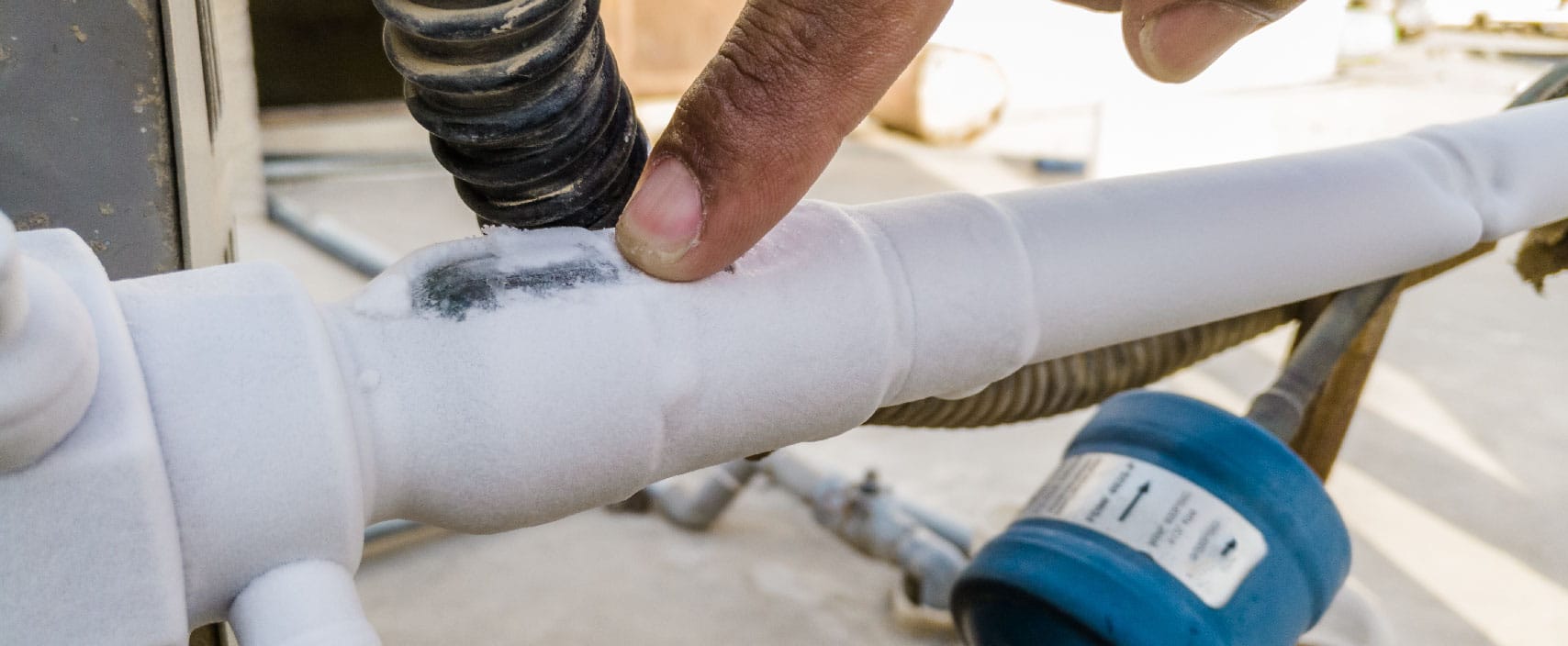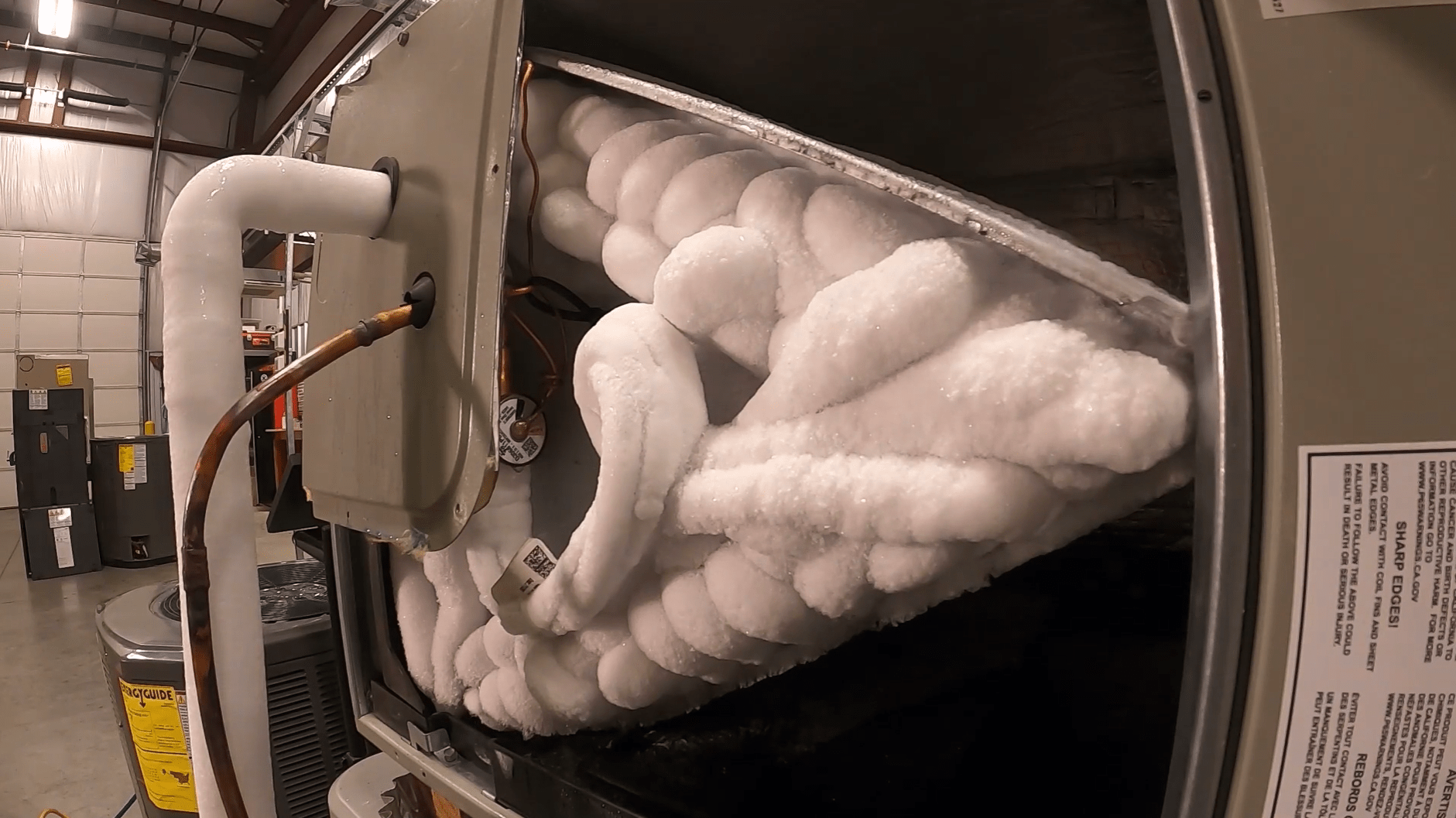Dealing with a Frozen AC Pipe: Professional Guidance
Dealing with a Frozen AC Pipe: Professional Guidance
Blog Article
What're your thoughts concerning Why Is Ice On My Outside Air Conditione?

Intro
Finding that your a/c pipe is iced up can be worrying, particularly during warm summer months when you rely on your air conditioning system one of the most. Comprehending what to do in such a circumstance is essential to prevent further damages to your air conditioning system and ensure your convenience inside.
Comprehending the Causes
Several factors can add to the freezing of an AC pipeline. Understanding these reasons can assist you address the problem efficiently.
Absence of Airflow
One typical source of a frozen air conditioner pipe is inadequate air movement. When the air flow over the evaporator coil is limited, it can cause the coil to go down below freezing temperature level, resulting in ice development on the pipeline.
Low Refrigerant Levels
Not enough cooling agent levels in your a/c system can additionally result in a frozen pipe. Reduced cooling agent levels can cause the pressure in the system to go down, leading to the freezing of moisture on the evaporator coil.
Cold Weather Conditions
In colder environments, freezing temperature levels outside can contribute to the freezing of air conditioning pipelines. If your a/c system is not effectively protected or if there are leakages in the ductwork, cool air can infiltrate the system, causing the pipe to ice up.
Dirty Air Filters
Unclean or clogged up air filters can restrict airflow in your air conditioning system, causing numerous concerns, consisting of an icy pipeline. It's vital to change or cleanse your air filterings system consistently to make certain correct air movement and stop ice buildup.
Indications of a Frozen A/c Pipe
Identifying the signs of a frozen air conditioning pipe is vital for timely activity.
Decreased Airflow
If you see a significant decline in airflow from your vents, it might show a frozen pipe.
Ice Buildup on the Pipe
Noticeable ice buildup on the refrigerant line or the evaporator coil is a clear sign of an icy air conditioning pipe.
Odd Sounds from the Unit
Uncommon sounds, such as hissing or bubbling, coming from your a/c device can signal that there's ice present on the pipe.
Immediate Actions to Take
When faced with a frozen air conditioning pipe, it's important to act swiftly to stop more damages to your air conditioning system.
Switching off the a/c
The very first step is to switch off your air conditioning unit to stop the system from running and worsening the issue.
Checking for Blockages
Check the area around the indoor system for any type of blockages that may be obstructing air movement, such as furniture or drapes.
Thawing the Pipe
You can use mild techniques like placing towels taken in warm water around the icy pipe to help thaw it gradually.
Preventive Measures
Taking safety nets can help stay clear of future incidents of an icy a/c pipe.
When DIY Methods Fail
If your attempts to thaw the pipeline or address other concerns are unsuccessful, it's time to employ a professional.
Value of Hiring a Professional HVAC Technician
A certified HVAC service technician has the proficiency and tools necessary to detect and fix issues with your AC system securely and efficiently.
Regular Maintenance Checks
Set up regular upkeep talk to a professional HVAC professional to guarantee that your air conditioner system is running effectively.
Altering Air Filters
On a regular basis change or clean your air filters to avoid airflow restrictions and maintain optimum efficiency.
Protecting Exposed Pipes
If your air conditioning pipes are revealed to cool temperatures, consider insulating them to stop freezing during cold weather.
Seeking Professional Help
If DIY methods fall short to fix the issue or if you're unclear regarding just how to proceed, it's ideal to seek assistance from a certified HVAC service technician.
Conclusion
Dealing with an icy air conditioning pipe can be a frustrating experience, yet recognizing just how to react can help reduce damages and recover convenience to your home. By understanding the causes, recognizing the signs, and taking timely action, you can efficiently attend to the problem and avoid future incidents.
G UP? HOW TO FIX IT?
It happens all over America. And the rest of the world probably. It’s the hottest day ever and for some darn reason your AC isn’t cooling the house. You fiddle with the thermostat to try and fix the problem. Nada. All you can do now is go outside and check the AC unit. You make your way there and find your air conditioner unit is frozen! But how?
In this post we’ll cover how you can tell that your air conditioner has frozen (other than the obvious reasons), what could have caused the freeze, and some of the things you can do about your AC freezing up. And if you have a frozen heat pump condenser, read our blog about it to learn what to do! But remember, it is always best to avoid your AC freezing up with an AC tune up. And if you are moving into a home, it's critical to get HVAC inspection so that you are aware of an AC problems before you move in.
Keep reading and you may be able to fix the frozen AC yourself. If you can’t, call an HVAC specialist. If you live in Maryland, call SuperTech HVAC for AC repair. We’ll take care of it.
How Does An Air Conditioning Unit Work?
How you probably imagine an AC works is wrong. Contrary to popular belief, an AC system does not inject cool air into a building. Instead, it removes the heat from inside and transfers it outside. Cool huh? (Pun intended).There are 4 major components among the 3 stations of an air conditioning system: the evaporator coil, the compressor, the condenser, and the refrigerant – a special chemical that links everything together through a closed loop system.
Station 1:
Warm indoor air is sucked into the return vent, through a filter, and blows over the evaporator coil. The heat is absorbed into the cold refrigerant, turning it from liquid to gas. The air, which is now cool, is blown back into the home to areas that your thermostat, i.e. you, has decided.
Station 2:
The refrigerant makes its way outside the house to the compressor, which squeezes the warm refrigerant, raising its gaseous temperature even more.
Station 3:
When the super hot vapor refrigerant reaches the condenser, the last step, the heat is expelled and absorbed into the outdoor air. The refrigerant instantly cools, which changes it from gas back to liquid form. The cold liquid refrigerant is now ready to return to station 1 and repeat the process.
Is Your AC Freezing Up? Here Are The Signs:
As you may have guessed, your air conditioner unit freezing up on a hot day is not normal.
If this happens, there's no need to panic. Often the issue can be solved with a little troubleshooting. If the AC unit is left frozen for too long however, you may find yourself with a bigger problem.
First things first, how do you know your AC is frozen?
Well, the obvious sign is the ice on your refrigerant line-set pipe. Simply check between your outdoor AC unit and your home's exterior wall to see whether your AC line frozen.
You might also have a frozen evaporator coil. This one's not as easy to check. You'll need to open a panel on the indoor unit to inspect. Don't do this unless you're handy. If you aren't, call an HVAC pro like SuperTech HVAC or you may damage something in the process.

I hope you enjoyed reading our section about What Causes AC Pipes To Freeze?. Thank you for finding the time to read through our short article. Do you know about another person who is fascinated with Air Conditioner Frozen? How To Fix your Frozen AC Line? Why not promote it. We thank you for reading our article about How can I fix an air conditioner’s frozen pipe?.
Source This Article Report this page